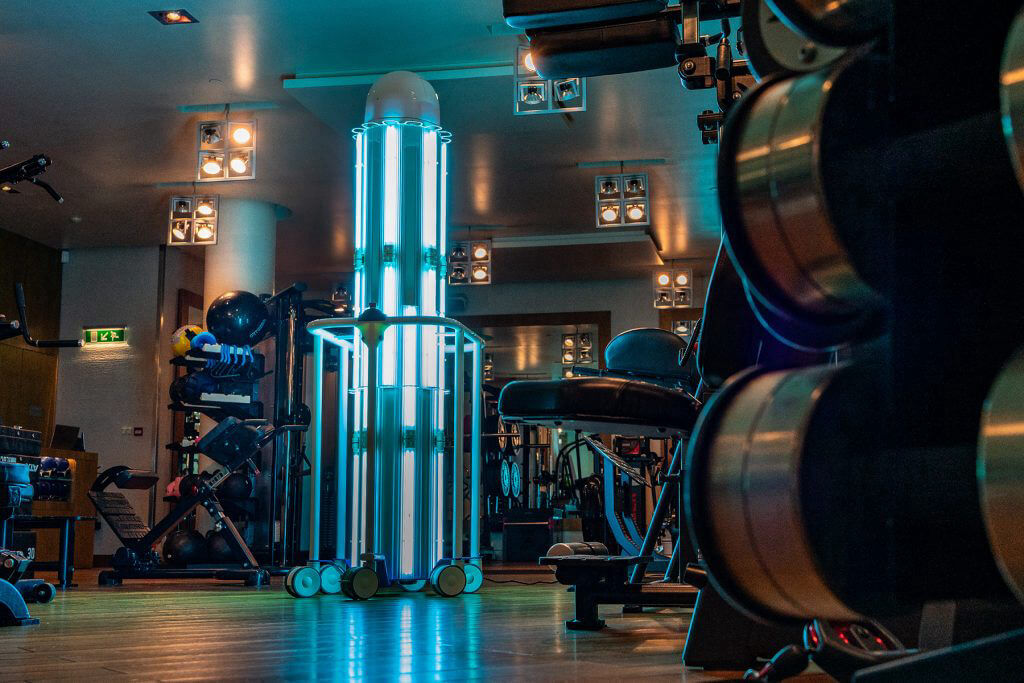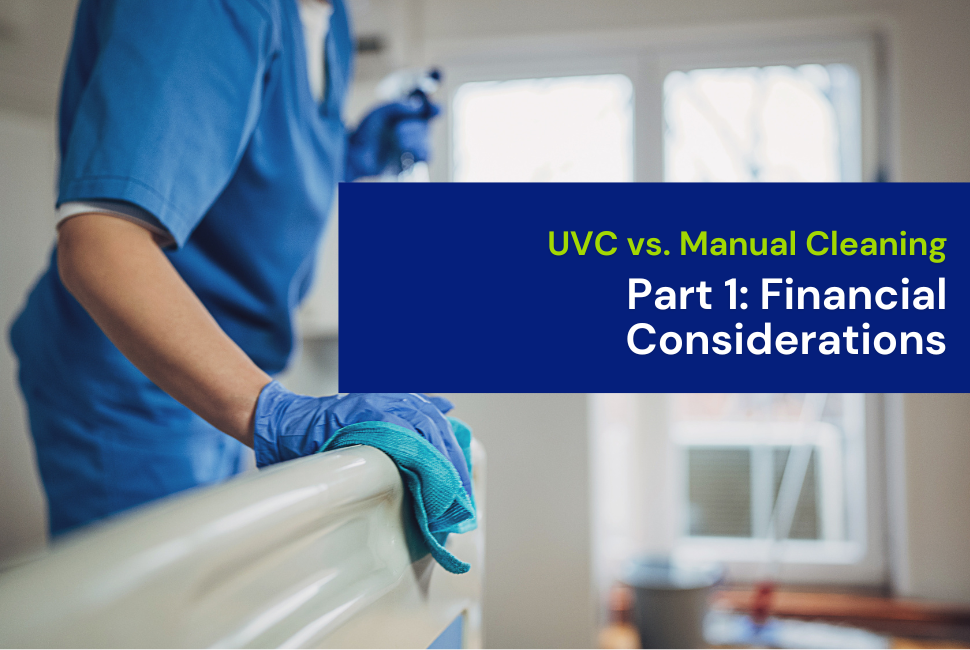With both static and mobile UVC disinfection solutions available it’s important to understand the benefits prior to purchase. We provide 6 reasons why static solutions are more effective.
The current crisis has put a spotlight on UVC disinfection (in large part because cleaning surfaces is not enough to kill COVID-19).
Managers of medical facilities, offices, hotels, restaurants and other commercial spaces who are considering UVC disinfection will find that the available devices can be very broadly divided into ‘static’ solutions (i.e. those that remain still within a room while disinfecting), and ‘mobile’ solutions (sometimes called ‘autonomous’ solutions, which move around a room while disinfecting, much like a robotic vacuum cleaner).

Which is better – mobile disinfection or static disinfection?
To answer this question, it’s important to understand how UVC disinfection works. UVC is a specific wavelength of ultraviolet light which breaks down the DNA* and RNA* of pathogens, preventing them from replicating and effectively killing them – assuming, of course, that the light is delivered at the correct intensity, for the correct amount of time.
Static systems have been on the market for the longest, and are relied upon by the widest range of UVC users. By contrast, mobile systems are a recent innovation in the UVC disinfection sector and are often promoted as an ‘autonomous’ solution
Each broadly functions in the same way, delivering a controlled output of UVC light to kill pathogens in the room.
But the movement around the room introduced by mobile solutions means there can be fundamental changes to the device’s efficiency, efficacy, and even safety – and the advantages of introducing movement aren’t necessarily obvious.
There are six key reasons why we believe static solutions are superior to mobile.
Six advantages of static UVC disinfection solutions versus mobile solutions
1 – The efficacy of a UVC device is always defined as intensity (of the UVC emitted) divided by the time spent delivering the disinfection cycle. On a static solution, this equation is straightforward – but a mobile solution’s efficacy will always be affected by the speed at which the unit itself can move. This means that a static solution will tend to boast more consistent efficacy in a wider range of settings.
2 – Some static solutions are more flexible to changes in room layout and contents – because instead of relying on physically moving around the room, they adjust their UVC output to reach all areas. By contrast, a mobile solution will need to have set paths around rooms mapped. Each time a room layout or contents changes, remapping will need to take place – at a cost to the end user.
3 – Static solutions connect directly to mains power – meaning no recharging, and no costly battery replacements at the end of a finite battery life cycle.
4 – Mains power also enables static solutions to deliver greater and more consistent UVC light intensity – leading to greater efficacy – than a battery-based solution.
5 – The best static UVC disinfection solutions can be safer than mobile equivalents. They maintain a 360 degree perspective of the room they are disinfecting, and rapidly shut off the disinfection cycle if they detect movement within the room to protect nearby humans. Because mobile solutions are moving around the room as they disinfect, they are not generally able to perform this detection with such reliability. Also if room layouts or contents change, collisions with furniture or walls can also be an issue.
6 – Static solutions are just as ‘autonomous’ as mobile solutions – which is to say, they both require manual cleaning beforehand. Static UVC disinfection programmes take place independently from the user, just as mobile programmes do, but without the added and unwanted variables for efficacy and safety which are inherent once the requirement for room-mapping and movement around the room are introduced.
Next steps for prospective UVC disinfection device buyers
Finsen Tech’s own THOR UVC® static disinfection device is a category leader – with up to three pre treatment room scans, that enable them to reach all corners and eliminate shadows, a stable mains-based power source, no recharging, and an extremely reliable, foolproof approach to user safety. Whilst THOR UVC® disinfects one room, the operator can move quickly onto performing manual cleaning on the next, for maximum efficiency.
Find out more about THOR UVC® here.
*Footnote: RNA stands for Ribonucleic acid. It is one of the three major biological molecules that are essential for all known forms of life (along with DNA and proteins). DNA stands for deoxyribonucleic acid. It is a chemical which carries genetic information and whose molecules are arranged in a spiral.



